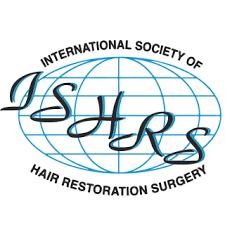Crown Hair Transplant
HOME > Crown Hair Transplant
Hair transplantation may be necessary for the crown, sometimes referred to as the vertex, either alone or in conjunction with other areas of the head. Given the severe hair angle changes that occur in the crown area in a whorl or spiral, a pattern that must be painstakingly replicated for a perfectly natural result, crown hair transplant treatments may be the most technically challenging of all types of hair restoration surgeries. Additionally, the crown frequently has huge patches of baldness that need to be transplanted, necessitating numerous grafts in a single location.
Traditional male pattern baldness causes many men to lose their hair in the crown region. Numerous diseases can cause hair loss in the crown area in women. However, this hair loss is often more diffuse than the focused balding pattern that affects men. Alopecia areata, anagen hair loss, cicatricial alopecias, disorders of hair growth, inflammatory scalp, telogen hair loss, tinea capitis, traction alopecia, and trichotillomania are a few ailments that may cause hair loss in the crown region. Some of these disorders on the scalp can only be treated with medication, while others can be addressed surgically, depending on their type and stage of development. Our doctors and staff at Harley Street Hair Transplants are well-trained and highly professional in performing such surgeries. We ensure the most natural-looking results alongside our minimal pricing.
Baldness is a problem that can affect all areas of the face and head. Often caused by Male pattern baldness, hair loss on the crown of the head can be one of the most infuriating issues men can deal with. Crown hair transplant surgery is the only long-term solution that provides you with a long-term, natural-looking result.
WHAT CAUSES THE CROWN TO BE BALD?
The “crown” is found at the top of the head, heading slightly towards the rear. When it comes to balding, one of the first areas to suffer hair loss is the crown. Hair loss in this area is often caused by a process called “male pattern baldness” (androgenic alopecia). This is where excess dihydrotestosterone (DHT) is produced by the body and combined with the hair follicles on your head; this disrupts the growth cycle of the hair on your head, causing irreversible shedding.
What’s worse is that this process of hair loss becomes more prevalent as men age, and there is nothing we can do to prevent it. Male pattern hair loss is a heredity condition, and many men experience crown hair loss as early as 30.
WHAT IS A CROWN HAIR TRANSPLANT?
When it comes to hair loss, getting hair transplant surgery is the only option that offers a long-term, natural solution for patients. A crown hair transplant looks to take existing hair on your head and implant this into your affected area. Different patients often show different severity of balding, and it is this that usually dictates the course of treatment required. For those experiencing thinning, a lighter course of non surgical hair loss solutions may be all that is needed. Equally, for those who have suffered extensive balding, a FUT or FUE hair transplant may be required. All hair transplants at Harley Street Hair Transplants are carried out by GMC registered doctors at CQC clinics. We want you to rest assured that our procedures are clean, safe, and carried out by experienced professionals.
HOW DOES A CROWN HAIR TRANSPLANT WORK?
Before your surgery, Harley Street Hair Transplants offers a free consultation with one of our doctors. At this phase, your treatment course, costs, and location of the procedure will all be determined.
During a typical hair transplant surgery, you will first be given a local anaesthetic by the surgeon so you won’t feel anything. From here, hair follicles are taken from a donor area (typically the back of the scalp) and implanted into a recipient area (in this instance, the crown). Depending on the severity of your baldness, this will determine the number of follicles (or “grafts”) needed. Obviously, if the crown is completely bald, it will need more grafts than one showing early signs of hair loss or thinning.
After the hair transplant procedure, you will be provided with a full aftercare package that will guide you through recovery. Your recovery time will be based on your course of treatment and the number of grafts implanted. Less invasive treatments (such as FUE) should leave you recovering for 7-10 days, whilst more invasive treatments (such as FUT) may leave a scar that takes a few weeks to heal.
When it comes to results, you should expect to wait between 4-6 months. This gives your new hair follicles to grow naturally. Your crown should start looking thicker and fuller in no time!
WHAT TREATMENT OPTIONS ARE AVAILABLE?
There are a number of different hair transplants available to solve crown hair loss. Here, we’ve devised a quick list to help you along the way.
- Follicular Unit Extraction (FUE) – Using brand new technology, an FUE hair transplant is minimally invasive and offers the highest yield of hair regrowth. Extracting individual follicles’ hair from a donor area and implanting them into your affected area, this treatment boasts a swift procedure, short recovery time, and a minimal amount of scarring.
- Follicular Unit Transplantation (FUT) – Often called the “strip method,” a FUT hair transplant is a stalwart hair loss procedure. Tried and tested over decades of use, this surgical procedure takes larger strips of hair from the back of your head, separates the strip into smaller grafts under a microscope, and implants these onto your affected area.
- Platelet Rich Plasma (PRP) – This clever procedure uses your own body to stimulate hair growth! After taking a small sample of your blood, your platelet-rich plasma is separated and injected into your affected area. This, as scientifically proven, stimulates new cell growth
When it comes to cost and prices, hair transplants can differ greatly in price. As stated above, this is dependent upon what treatment you have and how many grafts are needed. Whilst 3 courses of PRP will only set you back £995, the average cost of a typical hair transplant is around £4,000.
At Harley Street Hair Transplants, we’re committed to offering a crown hair transplant to anyone who wants one. That is why we’ve developed affordable payment plans over the course of 12 and 24 months. No one should ever be priced out of a hair transplant!
WHY GET A CROWN HAIR TRANSPLANT?
When compared to other treatment methods, there is nothing else available on the market that restores hair and prevents further hair loss like hair transplant surgery. Booking yourself for crown hair restoration surgery can be one of the best things you can do to boost your self-confidence and appearance.
When it comes to alternative hair treatments, most patients come to us having already tried chemicals like minoxidil and finasteride. Whilst this help to maintain hair density whilst you take them as supplements, as soon as you finish taking them, thinning and hair loss will continue. This will leave you wondering why you didn’t just get a hair transplant in the first place.
Similarly, in terms of results, nothing quite compares to a crown hair transplant. Using your own hair grafts as a restoration effort, nothing else even comes close to a “real looking result.” As well as chemical treatments, some patients have even tried wigs or micro scalp pigmentation (tattooing). Whilst this may hide the effects of losing hair, patients often come to us complaining about these methods that they have gotten elsewhere.
All of these alternative treatment methods are not performed under the experienced eyes of a doctor either. Investing in a hair transplant ensures your hair restoration journey is being performed by a safe pair of hands in a clean clinic – it’s a genuine medical procedure





